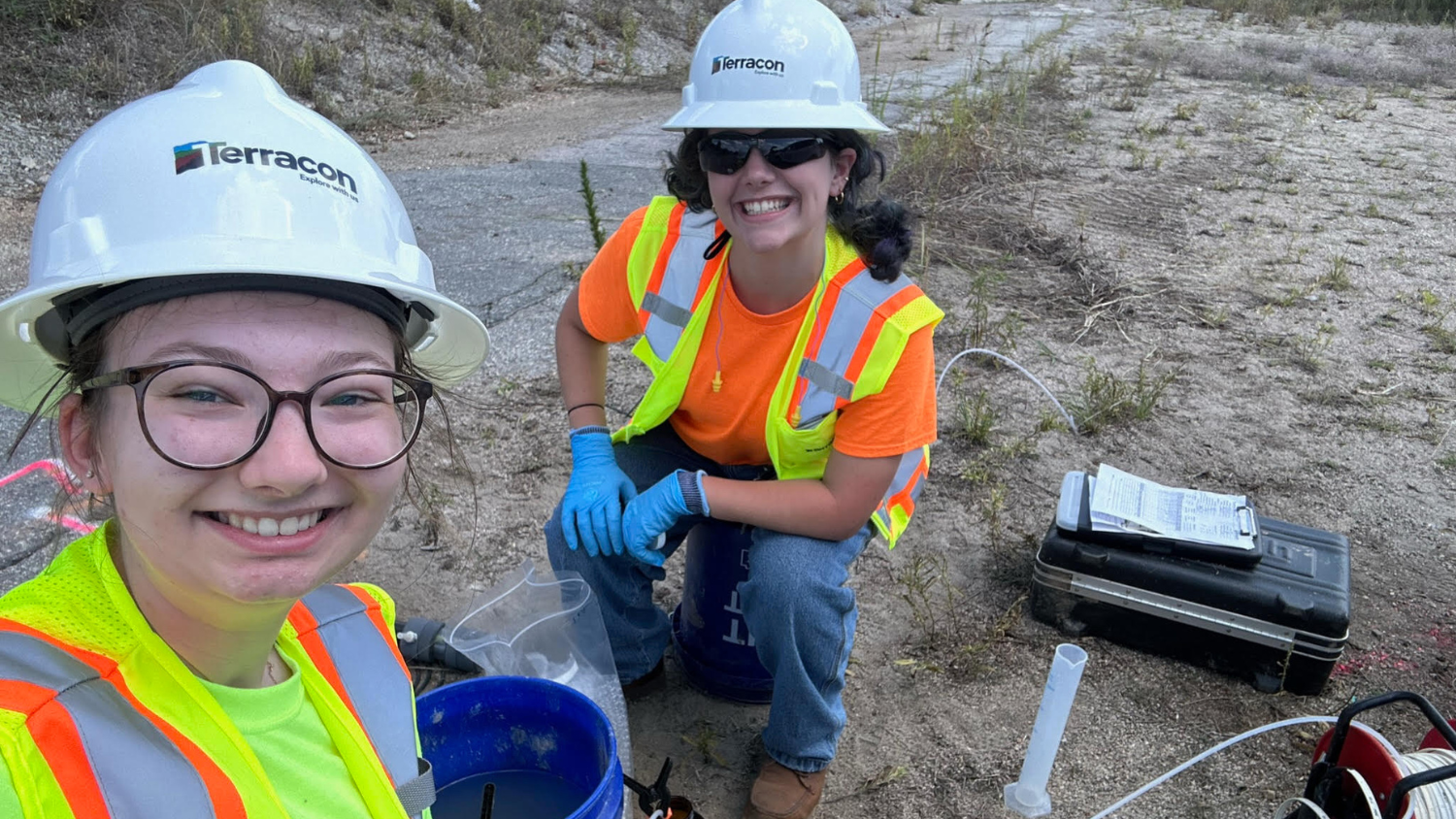North American river otters are known for their playful swimming, but they are also an important species for helping scientists understand the health of river systems. A new study from North Carolina State University detected evidence of otter diseases that may be spread by pets.
Researchers said the study’s findings are not cause for alarm, but are important for establishing a baseline that will allow wildlife officials to monitor otter health over time.
“Everything runs to the rivers,” said Chris DePerno, co-author of the study and a professor in NC State’s Fisheries, Wildlife and Conservation Biology Program. “Everything on the landscape ends up in the water, and that is where otters live and eat. That is why they are an excellent species to investigate pathogens and diseases.”
The research team conducted laboratory tests to identify the presence of three different diseases in a group of 220 otters that had been trapped by hunters in two seasons in 2014-15 and 2015-16.
DePerno and his collaborators detected parvovirus, a virus found in mammals, in 19 percent of otters studied. Parvovirus can infect unvaccinated dogs and related species as well as other mammals.
They also detected a parasite, Toxoplasma gondii, in 24 percent of otters tested. T. gondii can spread to people and other animals, causing a disease called toxoplasmosis. The disease is common in outdoor cats, and DePerno has detected it in feral pigs as well as river otters.
The researchers also found very low prevalence, less than 1 percent, of Leptospira bacteria, which can be found in mammals, reptiles and amphibians. This genus of bacteria cause a disease called leptospirosis that can be transmitted to people, and is lethal in otters.
The otter population is abundant and self-sustaining, researchers said, so the prevalence of these diseases did not appear to be affecting survival of the otter population across North Carolina. DePerno indicated that more work is needed to determine the relationship of disease transmission from unvaccinated domestic animals, as well as possible “sublethal effects” of these diseases – meaning effects that do not kill the otters but could affect their health and ability to reproduce.
We spoke to DePerno to learn more about the study and findings.
The Abstract: Why were you interested in studying diseases in otters?
Chris DePerno: Otters are aquatic, and they are at the top of the food web. So, we were interested in how these diseases may influence reproduction, survival, fitness and abundance of the otter populations.
This information will help the North Carolina Wildlife Resources Commission, which was one of our partners on the project, have more data to manage otters.
Also, wildlife diseases can impact biodiversity within and across ecosystems. Otters are an excellent sentinel species, which means it’s a good species to study because it can tell you a lot about the environment.
There are also concerns regarding biomagnification. Biomagnification is when a toxin, substance or pathogen accumulates in a species.
As a very simple example of biomagnification, let’s say there is a little bit of mercury in the environment. Fish pick it up from their prey and have a tiny amount of mercury. Otters then go and eat many fish – let’s say 100. Now otters have accumulated all of the mercury that those 100 fish had accumulated. So whatever contaminants are present throughout the food web will be magnified in the top predators.
In another recent study, we evaluated the presence of metal contaminants, such as mercury and cadmium, in otter populations in North Carolina.
TA: Have otters historically thrived in North Carolina?
DePerno: In the late 19th century and early 20th century, there was little to no management of wildlife species. Otters were decimated in the mountains and much of the Piedmont of North Carolina. Fortunately, otters were translocated from the coastal plain to the mountains, and the statewide otter population recovered by 2005. Today, otter populations are doing very well across North Carolina. All wildlife populations are managed, and hunting and trapping are regulated.
We wanted to develop a solid baseline of information about diseases and contaminants for otters across North Carolina.
TA: Why did you study prevalence of leptospirosis, parvo and toxoplasmosis in particular?
DePerno: Leptospirosis is bacterial and zoonotic, which means it can move from animals to people. Parvo is a highly contagious virus that is not zoonotic, meaning it doesn’t spread to people, but it does spread through many vertebrates, including mammals. Most pet owners will be familiar with canine parvo, which affects dogs – unless they are vaccinated. It can also impact wolves and other canids. Untreated dogs can get it in the environment, and otters can as well. Toxoplasmosis is a zoonotic parasite that is widely distributed.
These are important pathogens because otters are semi-aquatic and the quality of the water sources may influence reproduction, survival, fitness and abundance of the otter populations.
TA: How are these diseases spread to otters?
DePerno: Primarily through contaminated soil and water. Once contaminants are in the soil – maybe from outdoor cat feces – they can run off into the water and be picked up by otter populations.
There has been research in Washington state and California, where cat feces in toilets was running into the sounds and bays and sea otters and river otters were being infected with toxoplasmosis. That gives you a really good idea of how this stuff can spread.
Aquatic ecosystems are efficient ways for pathogens and contaminants to move and be picked up by semi-aquatic furbearers like otters. Landscape drainage can move these pathogens into rivers and wetlands, and apex predators like otters are exposed to them.
TA: How is the spread of these diseases in wildlife related to people?
Humans are expanding across the landscape. And as we develop areas, we bring along invasive species with us, and we introduce those into the landscape. Of course, there is the potential for disease transmission between people, pets and wildlife, depending on the disease.
TA: What did you learn from your study?
DePerno: We detected very low prevalence of these diseases, especially of leptospirosis. We did see there were some higher levels of parvo and toxoplasmosis in a couple river basins, and we came up with some reasons why we thought that was the case, but did not see anything alarming.
We were unable to determine if there are any population-level impacts of these diseases and believe if there are any it is minor, but more research is necessary.
We would like to continue the work and delve deeper into bioaccumulation and where otters are picking up diseases and contaminants and how they are spreading it. We wanted to gather information on baseline levels to help us understand any future changes that we might see in the landscape.
The paper, “Leptospira, Parvovirus and Toxoplasma in the North American River Otter (Lontra canadensis) in North Carolina, USA” is published in the Journal of Wildlife Diseases. Authors included Charles W. Sanders II, a former graduate student from the Fisheries, Wildlife and Conservation Biology Program at NC State, and now a wildlife biologist for USDA APHIS Wildlife Services; Colleen Olfenbuttel, with the Surveys and Research Program of the Wildlife Management Division of the North Carolina Wildlife Resources Commission; Krishna Pacifici, assistant professor with the Fisheries, Wildlife and Conservation Biology Program at NC State; George R. Hess, professor with the Fisheries, Wildlife and Conservation Biology Program at NC State; and. Robert S. Livingston of IDEXX BioAnalytics.



